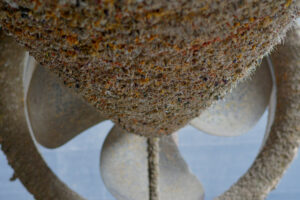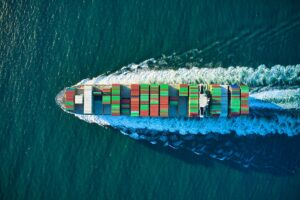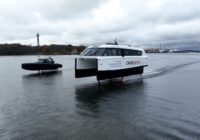Almost two thirds (59%) of the shipping industry underestimate the negative environmental impacts of biofouling, with as much as 1 in 4 claiming to know little about the issue, a new report by Jotun has found.
Biofouling is caused by the build-up of micro-organisms, plants, algae, and other small aquatic animals on the hull of a ship which can result in significant operational impacts. The marine growth which clings to the underside of a ship’s hull, reduces speed and maneuverability, causes the captain to power up and use more fuel to compensate for speed loss, and in extreme cases, can damage the hull.

The survey of 100 shipping industry professionals, conducted by Lloyd’s List on behalf of the specialist marine coatings manufacturer in May this year [2023], follows on from the recent GloFouling report published in partnership with the International Maritime Organization (IMO). This found that maritime transportation is responsible for 3% of the world’s total Green House Gas emissions but should vessels operate with a clean hull free from biofouling, CO2 emissions could be slashed by a fifth and fuel spend reduced by 19%.
The latest research by Jotun shows that the industry has a long way to go before achieving such gains. Just over a third of shipping companies (38%) said they invest in biofouling solutions outside of dry-docking, a process which tends to be conducted in five-yearly cycles.
Lack of awareness and cost-limitations were cited as the main reasons why 62% of shipping companies only invest in biofouling solutions during the dry-docking period. However, the GloFouling report showed that a ship could save as much as $6.5m on fuel costs over a five-year period by adopting proactive hull and propeller cleaning.

Morten Sten Johansen, Global Marketing Director, Hull Performance Category at Jotun, said: “If the shipping industry took a more proactive approach to hull cleaning, we as an industry could save as much as 198 million tonnes of CO21, according to global estimations published by the IMO in 2022. This is more than six times the volume produced by the nation of Norway annually.
“However, an issue which is often overlooked is the potentially catastrophic impact biofouling can have on biodiversity through the spread of invasive aquatic species, such as Pacific oysters which are plaguing European coastlines. The responses to our survey showed that this is still an incredibly misunderstood issue, with only 14 percent believing it posed a significant risk.
“As well as being more fuel efficient and lowering emissions, proactive cleaning would reduce the risks ships pose to international waterways and maintain the shipping industry’s right to operate.”
The survey highlighted the positive impacts of new Carbon Intensity Indicator (CII) regulations, with 88% of shipping industry professional saying they expect tackling biofouling to form part of their strategy to improve fuel efficiency, reduce greenhouse gas emissions and support environmental policies.

Morten Sten Johansen added, “It’s encouraging to see the impact new policies are already having on the industry and it’s likely that we’ll face more regulatory challenges in the future. Decarbonization is vital and adopting new regulations to deliver the long-term goals of the Paris Agreement requires significant collaboration from industry and policymakers.
“But as we’re a global industry, it is imperative that we take a united international approach if we are to succeed in reducing emissions, preserving fuel and protecting the oceans’ biodiversity.”
Jotun is unveiling the full research during this year’s Nor-Shipping as part of its aim to highlight the issue of biofouling among the global shipping community, fostering a cleaner and greener maritime sector which will meet the IMO’s ambitious decarbonization targets.
The report will be launched at this year’s Nor-Shipping exhibition in Oslo, where Jotun can be found at booth D03-04, or you can read in more detail here.







